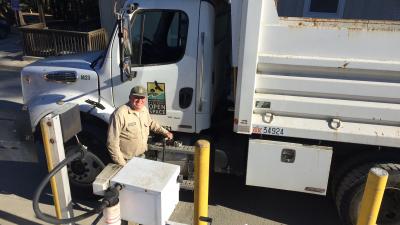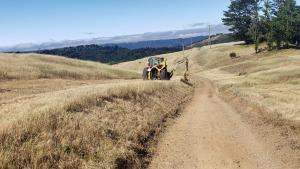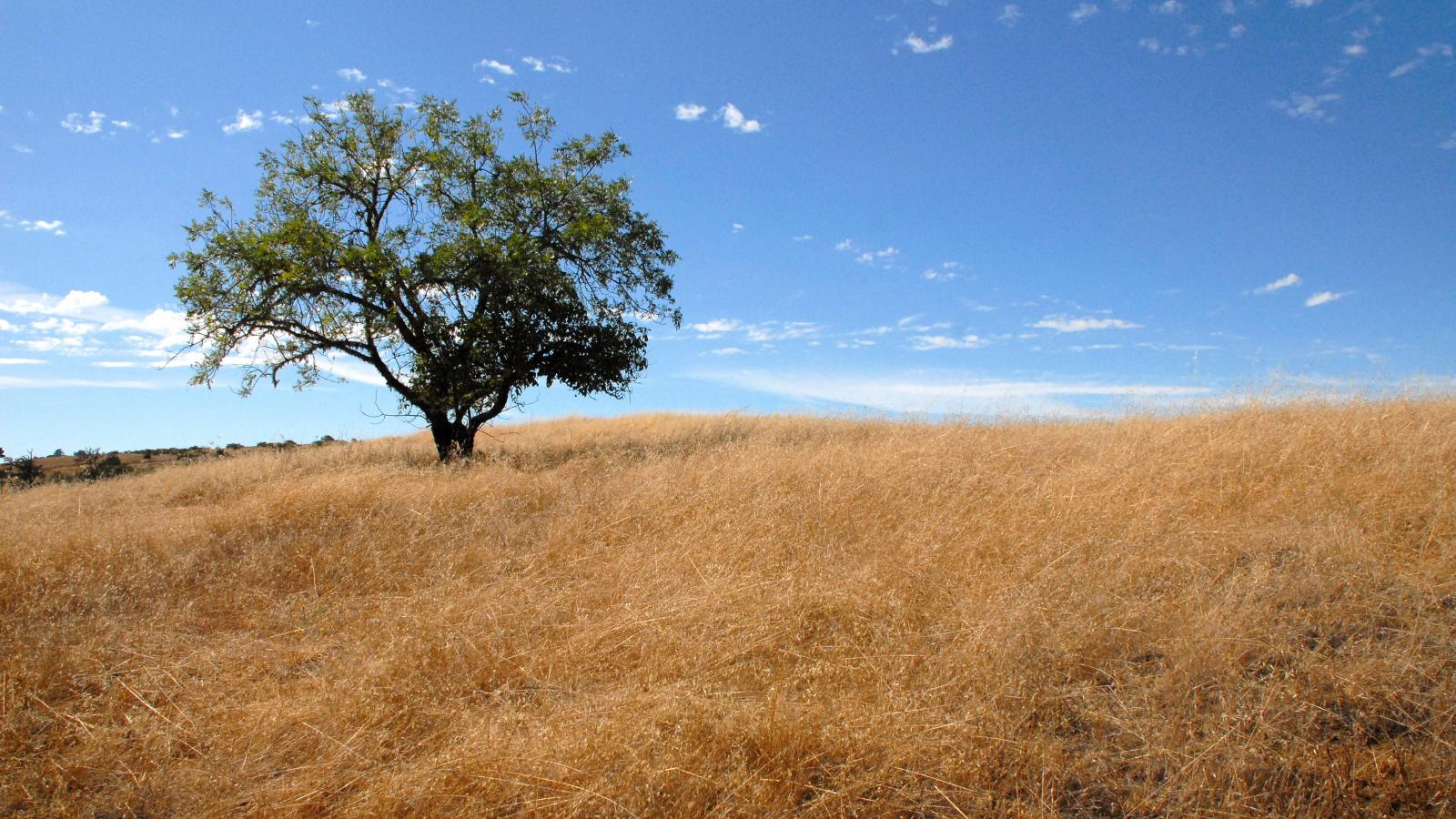Climate change is a direct threat to Midpen’s mission. Now and into the future, climate change has far-reaching consequences for the Bay Area’s natural environment and all of us who depend on it. Greenhouse gases released by burning fossil fuels for transportation and energy are changing our climate. As a result, we are seeing warmer temperatures, changes to plant and animal habitat ranges, more dangerous wildfires, sea level rise, and more intense droughts and floods. For Midpen this is an opportunity to lead by example and be part of the solution.


Midpen Surpasses Benchmark Goal for Curbing Carbon Emissions
Our most recent 2022 Greenhouse Gas Inventory shows Midpen continues to make great progress toward our greenhouse gas emission reduction goals.
Midpen’s Climate Action Plan, finalized in 2018, outlines efforts for meeting our goals to reduce operational emissions 20% by 2022, 40% by 2030, and 80% by 2050 as compared to our 2016 emissions. To track progress and maintain transparency about what actions we are taking to combat carbon emissions, every two years staff conduct a greenhouse gas inventory.

Our latest inventory shows that emissions in 2022 were 30% below the baseline, surpassing our goal of 20% reductions by 2022. The inventory measures emissions from vehicles, equipment and business travel (25% reduction), employee commutes (42% reduction), facilities (10% reduction) and tenant residences (34% reduction).
The primary drivers for the emissions reductions included increased use of renewable electricity, renewable diesel made from agricultural byproducts, greatly improved energy efficiency at the new administrative office and the hybrid commute policy implemented in the wake of COVID-19.
Midpen has more changes in the works to reduce emissions, including developing a plan to transition our fleet of vehicles and maintenance equipment away from fossil fuels over time. Some progress has already been made on that front, with new electric vehicles and trucks that can use renewable diesel. By 2035, law will require almost all types of vehicles sold in the state of California to be zero-emission, so it’s important that we begin preparing the charging infrastructure and planning our transition. It is our hope that by doing the right thing and working to reduce greenhouse gas emissions internally, Midpen can draw attention to this critical issue and inspire others to reduce emissions.

Stay informed!
Storing Carbon in Plants and Soils
Midpen’s open space lands store tens of millions of tons of carbon in plants and soils. Developing that land would release much of the carbon into the atmosphere. By acquiring and preserving open space lands, Midpen keeps that carbon stored in the earth.
In addition, in a process called sequestration, plants and soils breathe in more carbon every year, removing it from the atmosphere. Every acre of open space land absorbs on average 1 ton of carbon every year, and sequestration can be much more than that in ecosystems like redwood forests.
Midpen can manage the land to help it sequester more carbon and to make sure the carbon that's already locked away in plants and soils stays there long into the future. For example, Midpen is preparing t to study the potential to increase carbon sequestration in rangelands by incorporating biochar into soils.
Our Wildland Fire Resiliency Program is an example of land management that protects the carbon that’s already on the landscape, by reducing the potential for severe wildland fire that could threaten even our oldest, largest trees — our carbon-storing heroes.

Promoting Resilient Landscapes
Even if greenhouse gas emissions stopped tomorrow, some climate change impacts would still be inevitable. Midpen is preparing for those impacts by working with experts and regional partners to understand the vulnerability of habitats, plants and wildlife and identify land management actions we can take now to protect them in the future. Many of the actions that help make the landscape more resilient — able to absorb stress and maintain function in the face of climate change — are things land managers have always known are important. By protecting land from development, providing a system of connected refuges for plants and animals to move and adapt, and restoring ecosystems to minimize other stressors like invasive species and disease, Midpen protects the natural environment now and in the future.
Impacts from climate change aren’t limited to natural systems. Extreme weather systems like the series of storms in the winter of 2022-2023 may become more frequent as the climate changes, and can damage Midpen’s roads, trails, bridges, culverts, and other infrastructure. By planning, building, and repairing with climate change in mind, it’s possible to reduce these impacts and the cost of cleanup, so you can safely get back on the trails sooner after storms.

You can follow our lead and take steps to reduce your own contributions to climate change while bolstering large-scale efforts. Driving and flying less, switching to electric appliances, buying clean energy from your local community choice energy provider and supporting laws and regulations that fight climate change are some of the most impactful actions you can take.
Partners

Related Documents
Midpen Climate Action Plan (Opens in new window)
Related Projects


